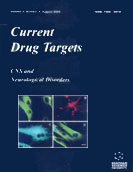Abstract
Transglutaminases (TGases) belong to a family of closely related proteins that catalyze the cross linking of a glutaminyl residue of a protein / peptide substrate to a lysyl residue of a protein / peptide cosubstrate with the formation of an N ε-(γ-L-glutamyl)-L-lysine [GGEL] cross link and the concomitant release of ammonia. Such cross-linked proteins are often highly insoluble. Neurodegenerative diseases, such as Alzheimer disease (AD), Parkinson disease (PD), supranuclear palsy and Huntington disease (HD), are characterized in part by aberrant cerebral TGase activity and by increased cross-linked proteins in affected brain. In support of the hypothesis that TGases contribute to neurodegenerative disease, a recent study shows that knocking out TGase 2 in HD-transgenic mice results in increased lifespan. Moreover, recent studies show that cystamine, an in vitro TGase inhibitor, prolongs the lives of HD-transgenic mice. However, these findings are not definitive proof of TGase involvement in HD neuropathology. In neurodegenerative diseases, the brain is under oxidative stress and cystamine can theoretically be converted to the potent antioxidant cysteamine in vivo. Cystamine is also a caspase 3 inhibitor. In addition to neurodegenerative diseases, aberrant TGase activity is associated with celiac disease. Interestingly, a subset of celiac patients develops neurological disorders. This review focuses on the strategies that have been recently employed in the design of TGase inhibitors, and on the possible therapeutic benefits of selective TGase inhibitors to patients with neurodegenerative disorders or to patients with celiac disease.
Keywords: transglutaminase, post-translational modifications of proteins, cag-expansion diseases, celiac disease
 2
2

















